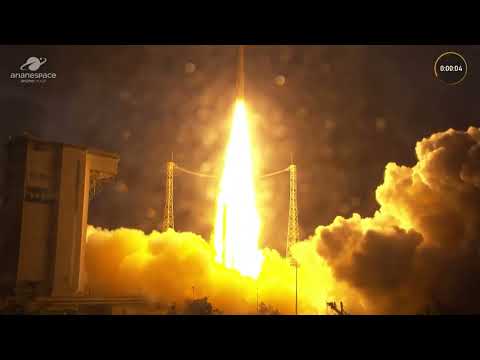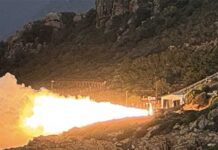
After nearly two years of being grounded following a December 2022 failure, Europe’s Vega C light-lift rocket has resumed operational service. The rocket carried the Sentinel-1C Earth observation satellite into orbit for the European Space Agency.
The Vega C rocket lifted off from the Guiana Space Centre’s Ensemble de Lancement Vega (ELV) launch facility at 22:20 CET (18:20 local time) on 5 December. The launch had been delayed by a day due to a mechanical issue that prevented the withdrawal of the mobile gantry.
At 00:04 CET, the Sentinel-1C Earth observation satellite was deployed into a sun-synchronous orbit at an altitude of 700 kilometers. Eight minutes later, at 00:12 CET, ESA successfully established communications with the satellite.
“One moment combined two great European achievements today: the third launch of a Sentinel-1 satellite and the third launch of Vega C, marking a triumphant return to form for both flagship European projects,” said ESA Director General Josef Aschbacher. “With the insertion of Sentinel-1C into orbit, ESA continues a legacy of steadfast Sentinels protecting the Earth and exemplifies why Europe needs secured flights: because what we send to space provides benefits to Earth, and it all starts with a launch.”
The Sentinel-1 Earth Observation Constellation
The Sentinel-1 constellation, part of the European Union’s Copernicus programme, consists of radar imaging satellites designed for all-weather, day-and-night Earth observation. These satellites provide critical data for environmental monitoring, disaster response, and maritime surveillance.
Sentinel-1C was initially planned to replace Sentinel-1A, which was launched in April 2014. However, after Sentinel-1B experienced an anomaly in December 2021, rendering it unable to continue its mission, ESA decided to utilize Sentinel-1C to fill the gap left by the beleaguered satellite. Sentinel-1D, which is expected to be launched in June 2025, will take over from Sentinel-1A.
Vega C return to flight
On 13 July 2022, Vega C was launched for the first time, seemingly greenlighting the vehicle for operational service. However, less than six months later, on 21 December, its first operational flight ended in failure, resulting in the loss of the Airbus Defence and Space Pléiades Neo 5 and Pléiades Neo 6 satellites.
An investigation into the failure identified issues with the material utilized for the Carbon-Carbon throat insert of the rocket’s Zefiro 40 second stage. On 28 June 2023, Avio, the rocket’s manufacturer, conducted a static fire test to recertify the Zefiro 40 stage for flight, using throat insert material from a new supplier. Unfortunately, the test ended in failure.
The investigation into the June 2023 test failure concluded that a complete redesign of the Zefiro 40 nozzle was necessary. Avio was also required to conduct two static fire tests to recertify the stage for flight, which the company successfully completed in May and October 2024 at its Sardinia testing facility.
With the successful launch of the third Vega C rocket, Avio appears to have put all issues with the rocket behind it. The next flight of Vega C is expected to take place in early 2025. The launch will carry the ESA Biomass Earth observation satellite into orbit for ESA.





